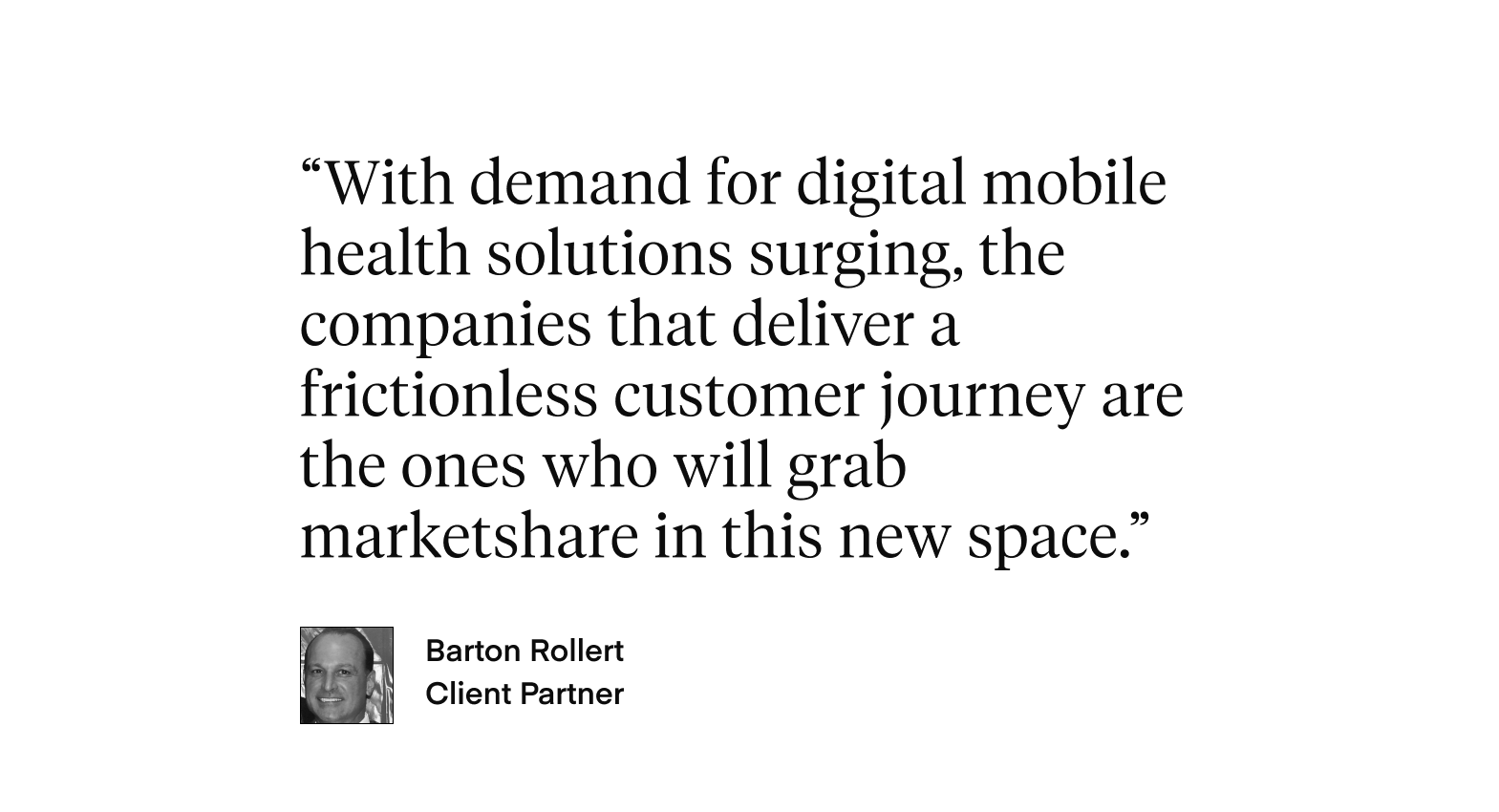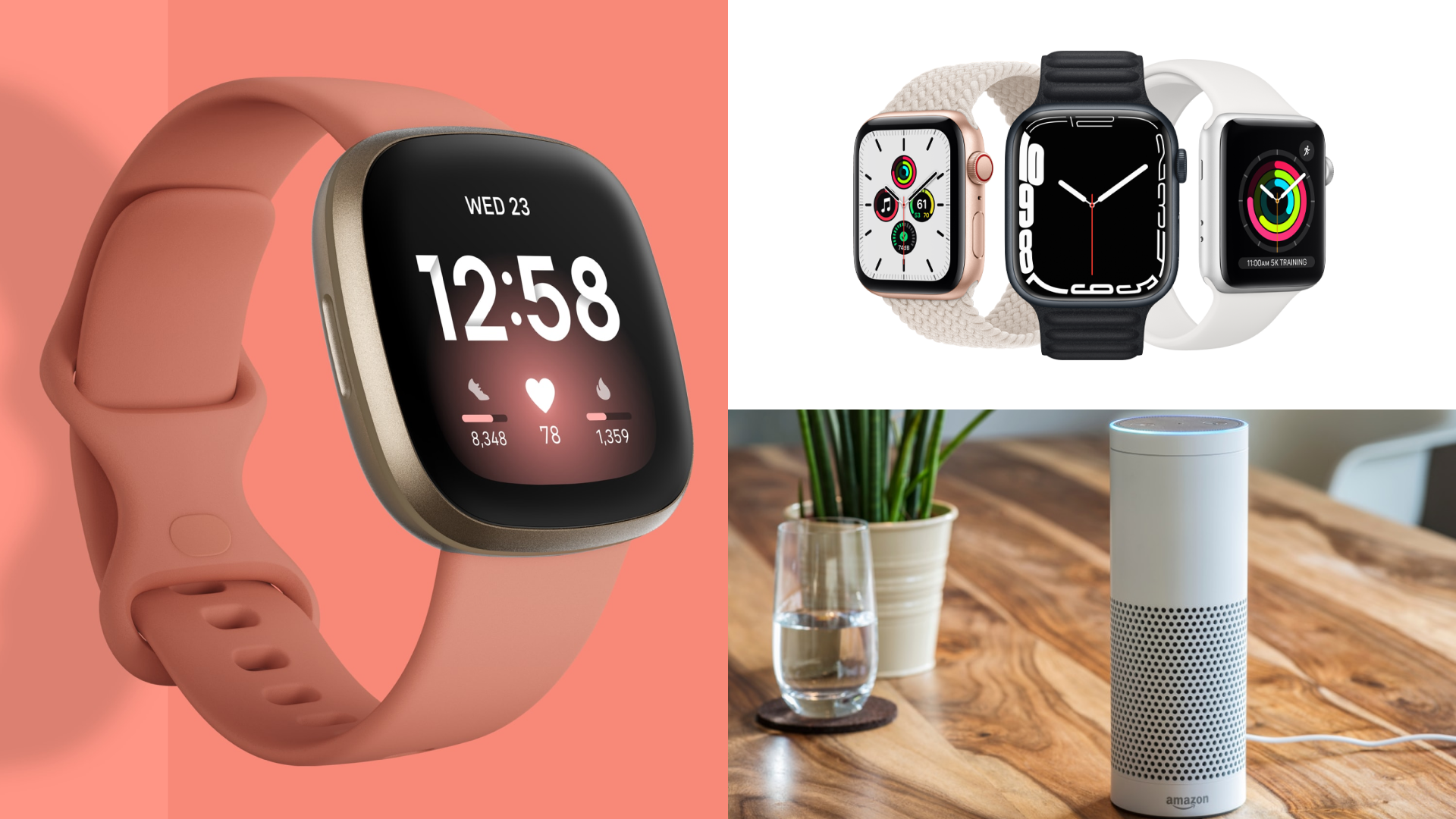How to Win in the New Customer-Centric Digital Health Marketplace
By Barton Rollert, Client Partner, YML
The transformation of health care is the biggest story of our time, but what does the future of health care actually look like? Digital Therapeutics might be the answer, rapidly growing during the pandemic and fueled by the rise of artificial intelligence, increased customer interest in managing their health remotely, and the consumerization of healthcare. Customers use these technologies—often in the form of a mobile app prescribed by their doctor—either by themselves or together with pharmaceuticals.
The industry is primed for growth. By 2030, the market is projected to be $8 billion. Also, in 2021 funding for digital therapeutics grew, especially among startups, continuing a trend from 2020, which saw $1.06 billion invested.
Already, there are over 400,000 health apps available for customers to download, with about 250 added daily. This causes two problems.
An explosion of apps makes it difficult to tell which one is right. Organizations use “digital formularies” to vet apps before prescribing them, but the sheer number of apps in the marketplace makes this difficult, and there isn’t standardized criteria to judge them.


The vast majority of health apps are niche, single-point solutions that address one need or health condition. End customers have to download multiple apps—often built by different companies—to manage different conditions.
Disconnected mobile health apps reduce customers’ adoption and prevent positive behavioral change
Most often apps from multiple vendors don’t share data with each other. That means customers can get conflicting information, especially if they’re managing multiple conditions and providers.
This disconnect between single point solutions makes consumers lose trust and adds friction to their journey. This all adds up to bad customer experience and contribute to negative behavioral change. If you can’t tell which app is giving you the right information, why use any of them at all?
So with demand for digital mobile health solutions surging, the companies that deliver a frictionless customer journey are the ones who will grab marketshare in this new space. None of this is new. Companies like Netflix and Amazon have been using design to change user behavior for years. But what does it take to bring a simple, user-based approach to healthcare that promotes positive behavioral change and actually helps people?
Align your GTM strategy around four key areas:
Develop your customer experience vision and get stakeholder alignment
Consolidate your app offerings into a simple, unified experience
Connect with customers where they are and in ways they expect
Future-proof your web and mobile experiences now
Develop your customer experience vision and align key stakeholders
Creating a research-backed product vision and iterating on that with customers during a prototyping process leads to better outcomes and long term success. Gaining stakeholder alignment early helps shift the strategy away from buying off-the-rack solutions toward a vision that consistently improves customer experience.
As an Ad Age award winning Customer Experience agency of the year, we’ve helped many companies build a customer experience vision and produce the product strategies and prototypes that gain stakeholder alignment.
Consolidate your apps into a simple unified experience
By consolidating disconnected mobile apps and integrating 3rd party solutions into one cohesive experience, you can improve engagement and reduce friction. Customers expect and want a unified experience where they can find medical records, get prescriptions, schedule appointments, and manage their own wellness with a human touch.
See how YML consolidated 10+ apps into a unified experience for a Albertsons.
Connect with customers where they are and in ways they expect


Watch the video above to see how we built a HIPPA-compliant, Alexa-enabled patient-provider service in partnership with Box.
Personal technology has moved on from smartphones to iOT, from wearables to smart speakers. Because you can’t count on any one individual path to interact with your customers, you need to support them with a comprehensive solution they can interact with in any way they want.
Future-proof your web and mobile experiences
Building and maintaining a comprehensive healthcare app can be a daunting challenge. Organizations can manage the complexity by investing in design systems up front. Then, leverage the scale afforded by a design system to rapidly launch consistently branded and rigorously tested features across every patient and provider touchpoint.
This ability to own the entire customer journey will help foster relationships with customers and contribute to positive behavioral change.
Customers’ desire to manage their health through mobile apps isn’t going away any time soon; it’s only accelerating. By creating a simple mobile health experience that seamlessly integrates into their customers’ lives, organizations will have a competitive advantage in the marketplace and drive positive behavior change for far more customers than with face-to-face interactions alone.
YML has over a decade experience of building digital products in health care. Get in touch to build yours.
About the Author: Barton Rollert
Barton has led CX innovation across F500 and startup companies to enable successful client strategies, product development and GTM opportunities across mobile, AI and eCommerce applications within the healthcare, technology and entertainment & media industries.